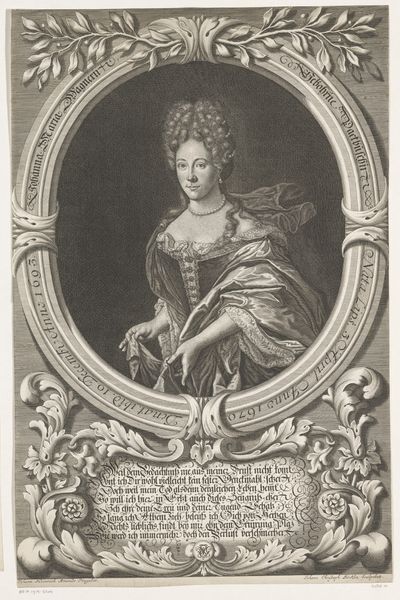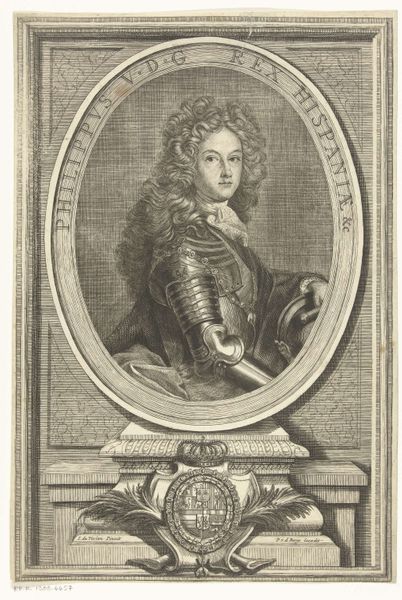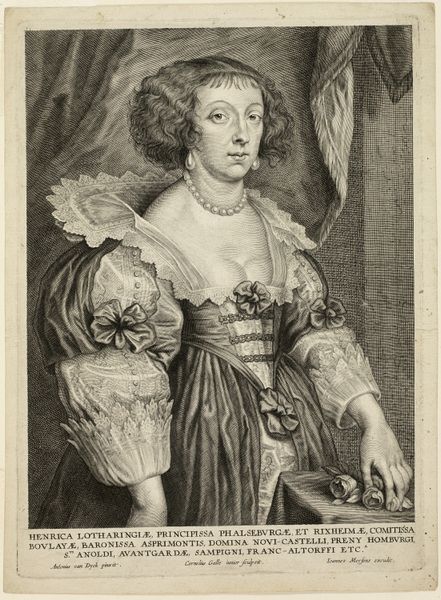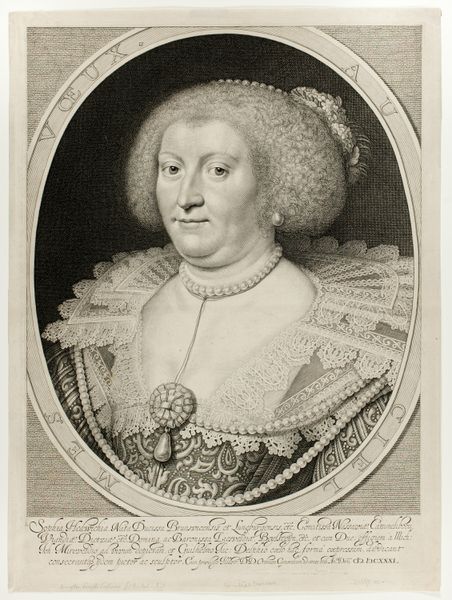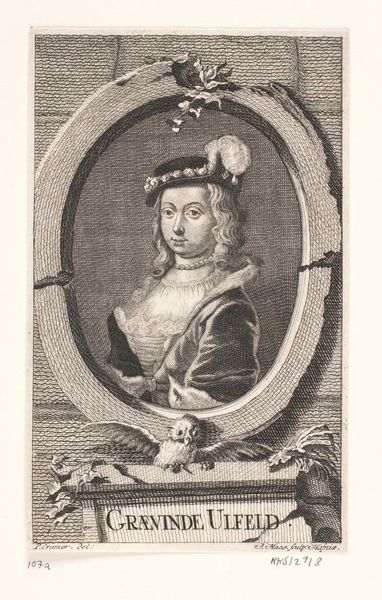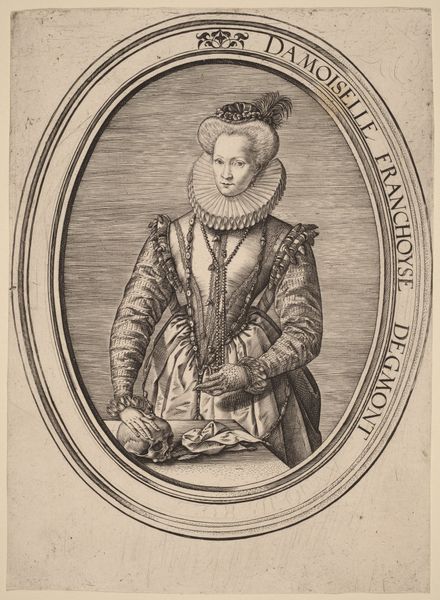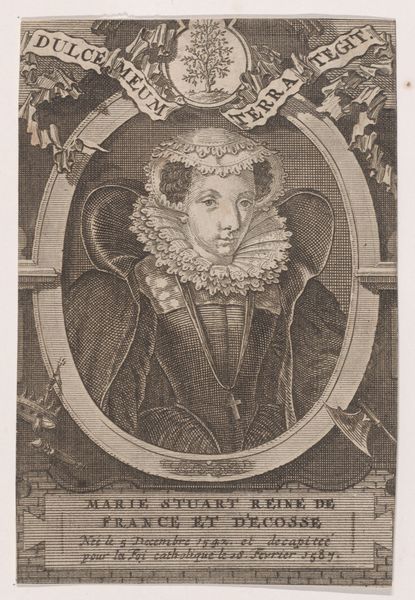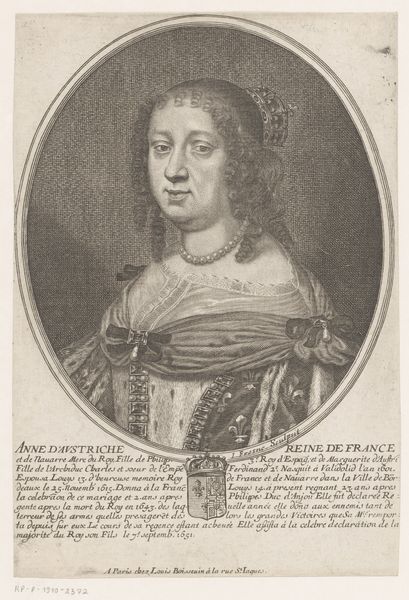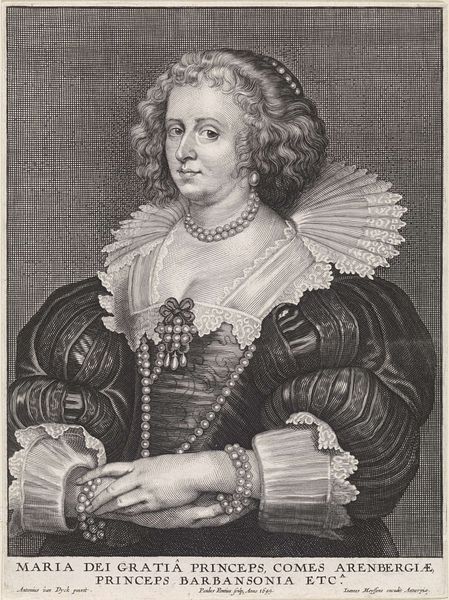
print, engraving
#
portrait
#
baroque
# print
#
old engraving style
#
portrait reference
#
limited contrast and shading
#
portrait drawing
#
engraving
Dimensions: height 166 mm, width 115 mm
Copyright: Rijks Museum: Open Domain
This is a portrait of Amalia van Solms, created around 1629 by Crispijn van den Queborn using engraving. The composition presents a striking balance between ornamentation and austerity. The oval frame, adorned with cherubic figures, contains a meticulously rendered likeness of Amalia. Queborn’s masterful use of line creates texture and depth, particularly in the intricate details of Amalia’s dress and elaborate lace collar, juxtaposed with the relative plainness of her face. This contrast draws our attention to the symbols of status and nobility, and prompts us to consider how the artwork destabilizes established meanings through the interplay of line, texture and space. The formal elements of the portrait, especially the play between opulence and restraint, invite us to see it as a representation of power negotiated through artistic and philosophical discourse. Art does not have a singular, unchanging meaning but is open to interpretations and meanings.
Comments
No comments
Be the first to comment and join the conversation on the ultimate creative platform.
